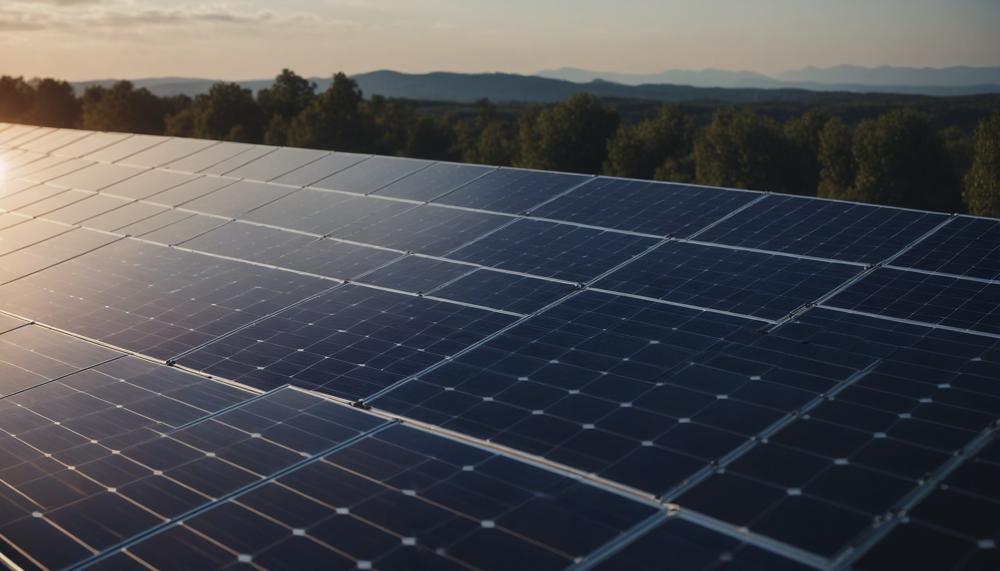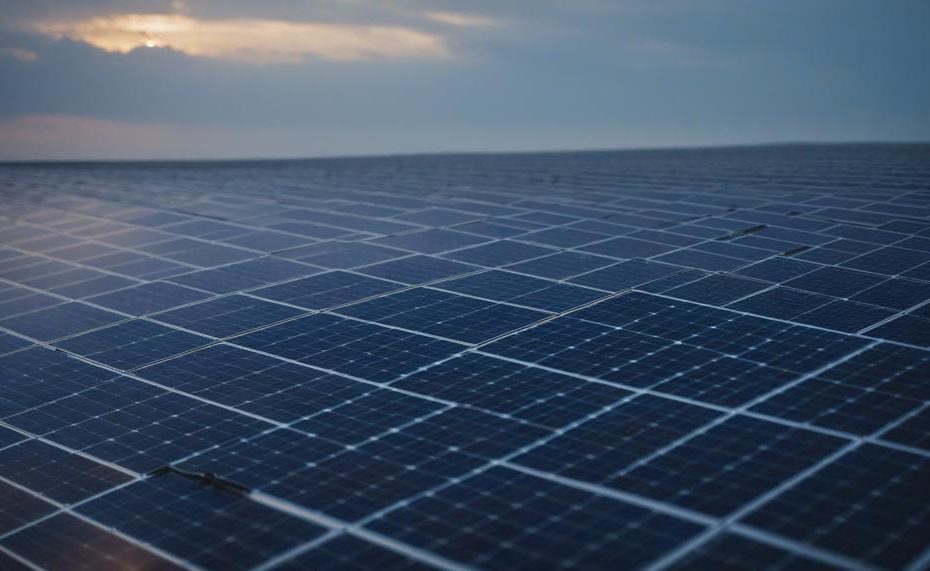With the rise of solar energy, we’re powering our homes and businesses with the sun, reducing our reliance on fossil fuels. But what happens when these solar panels reach the end of their 25+ year lifespan? Proper disposal becomes a critical task.
Let’s break down why it’s important and what you need to know.
- Environmental Impact: Solar panels generate electricity without harmful emissions, but their disposal can be problematic. By 2030, the U.S. will face a mountain of solar panel waste—up to one million tons, ballooning to 10 million tons by 2050.
- Hazardous Components: Some solar panels contain hazardous metals like lead and cadmium, classifying them as hazardous waste under the Resource Conservation and Recovery Act (RCRA). Proper disposal is essential to prevent these toxins from leaching into the environment.
- Regulations: Federal laws dictate how to handle discarded solar panels, whether they’re solid or hazardous waste. The toxicity characteristic leaching procedure (TCLP) test helps determine the waste type.
- Recycling: Recycling agencies play a key role in managing solar panel waste. They help repurpose valuable materials and ensure hazardous components are safely handled.
- Resources: The EPA provides guidelines and resources for properly disposing of and recycling solar panels, ensuring that end-of-life management is done responsibly.
Understanding the proper disposal methods for solar panels is crucial as we navigate the growing landscape of renewable energy. By handling solar panel waste correctly, we can continue to protect our planet while enjoying the benefits of clean energy.
Contents
Why Do you need to dispose of Solar Panels Properly?
Proper disposal of solar panels is essential to mitigate environmental risks and promote sustainability. Solar panels, while championed for their role in reducing fossil fuel dependency, contain hazardous materials like lead and cadmium that can leach into the soil and water if not handled correctly. Here are the key reasons:
| Environmental Protection | Resource Conservation | Regulatory Compliance |
| Improper disposal can release toxins into the environment, harming ecosystems and public health. Recycling helps prevent this. | Recycling solar panels allows valuable materials like silicon, glass, and metals to be reclaimed and reused, reducing the need for new raw materials. | Complying with regulations like the Resource Conservation and Recovery Act (RCRA) ensures that hazardous waste is managed safely and legally. |
| With millions of tons of potential waste by 2050, proper disposal is crucial to prevent overwhelming landfills. | Reusing materials from old panels reduces the environmental footprint of manufacturing new panels. | Federal guidelines mandate specific disposal procedures for hazardous materials, and following these can avoid legal penalties. |
| Preventing toxins from solar panels leaching into soil and water safeguards community health and biodiversity. | Recycling supports a circular economy, minimizing waste and promoting sustainable resource management. | Adhering to disposal regulations also fosters public trust and corporate responsibility. |
How Solar Panels are Recycled
The process for recycling solar panels involves several stages to ensure the effective recovery of valuable materials while mitigating environmental impacts. Here’s how it works:
Collection and Transportation
Old or damaged solar panels are collected and transported to a recycling facility.
Disassembly
Panels are manually disassembled to remove the aluminium frame and junction box. The glass front, which constitutes a significant part of the panel, is separated.
Mechanical Recycling
The remaining components are mechanically crushed to break them down into smaller pieces. This process helps to separate materials such as silicon, glass, and various metals.
Chemical/Thermal Processes

Chemical methods use acids or other solvents to dissolve and extract specific materials, such as silicon wafers.
Thermal processes involve heating the materials to high temperatures to remove contaminants and recover pure substances.
Purification and Reuse
The recovered materials undergo purification processes to ensure they meet the required standards for reuse.
These materials are then used in the production of new solar panels or other products, thereby closing the recycling loop.
Ensuring Proper Recycling
Proper recycling of solar panels can be done by:
Using Certified Recycling Programs
Engage with certified recycling programs and companies that follow stringent environmental standards.
Contacting Installers
Reach out to your solar panel installer or manufacturer, as many offer take-back schemes or can direct you to proper disposal facilities.
Staying Informed on Regulations
Be aware of local and national regulations regarding solar panel disposal and recycling. In regions like Europe, strict regulations ensure efficient recycling practices.
Private Recycling Firms
Companies such as We Recycle Solar offer specialized recycling services, employing both mechanical and chemical methods to maximise material recovery.
Where to Recycle Solar Panels
There are several options for recycling solar panels, each designed to efficiently recover valuable materials and minimise environmental impact.
Recycling Options:
- Mechanical Recycling: This method involves crushing, shredding, and milling solar panels to separate materials like glass, aluminium, and copper. These components are then processed for reuse.
- Chemical Recycling: This involves using chemicals to dissolve and separate the more difficult-to-recycle materials such as silver and toxic metals from the panels.
- Thermal Recycling: High temperatures are used to vaporise and recover metals and other materials.
- Dedicated Thin-Film Recycling: Thin film cadmium-telluride panels have a specialised recycling process that can recover semiconductor material, glass, and copper.
Recycling Locations:
- Manufacturer Take-Back Programs: Many solar panel manufacturers offer take-back programs. For example, companies like First Solar provide end-of-life recycling services for their panels. Check with the original manufacturer for specific programs.
- Specialised Recycling Facilities: Facilities like Recycle PV Solar in the United States offer comprehensive recycling services for solar panels. These facilities handle both mechanical and chemical recycling processes.
- Electronic Waste Recycling Centers: Some electronic waste recycling centers accept solar panels. Verify with your local e-waste facility if they process solar panels.
- Renewable Energy Industry Partnerships: Partnerships like SEIA (Solar Energy Industries Association) have created networks for recycling solar panels. They provide resources and locations for recycling solar panels responsibly.
Solar Panel Reuse
Reusing solar panels can significantly extend their lifespan and reduce environmental impact. Here are some innovative and practical ways to repurpose solar panels:
| Reuse Method | Description | Benefits |
| Secondary Solar Projects | Repurposing panels for community or off-grid use | Spreads renewable energy, benefits underserved areas |
| Building Integrated Photovoltaics (BIPV) | Incorporating panels into building materials | Energy production and functional building components |
| Agrivoltaics | Using panels in agricultural settings | Dual land use, benefits crops and generates energy |
| Water Heating Systems | Converting panels for solar thermal use | Reduces need for other heating sources |
| Educational Tools | Panels for school and university education | Hands-on learning about solar technology |
| DIY Projects | Creating small-scale home energy solutions | Promotes individual sustainable practices |
| Art Installations | Transforming panels into eco-friendly art | Raises environmental awareness creatively |
| Refurbishment and Resale | Refurbishing and selling at lower cost | Makes solar energy accessible to more people |
These methods not only prolong the life of solar panels but also contribute to sustainability by reducing waste and promoting renewable energy.
Conclusion
Properly disposing of solar panels is a vital aspect of sustainable energy management. As solar panels reach the end of their lifespan, addressing their disposal ensures we continue to protect the environment. These panels, while beneficial for clean energy, contain hazardous materials such as lead and cadmium that can leach into soil and water if not handled correctly.
By 2030, the U.S. could face up to one million tons of solar panel waste, increasing to 10 million tons by 2050. The environmental stakes are high, making it essential to follow federal regulations like the Resource Conservation and Recovery Act (RCRA), which mandates safe disposal methods. The toxicity characteristic leaching procedure (TCLP) test helps classify waste, ensuring proper handling.
Recycling plays a crucial role in managing solar panel waste. Recycling agencies help repurpose valuable materials like silicon, glass, and metals, reducing the need for new raw materials and mitigating environmental impact. The EPA provides guidelines to ensure responsible disposal and recycling, emphasizing the importance of compliance and resource conservation.
By committing to proper disposal methods, we can manage the growing solar panel waste effectively, protecting ecosystems and promoting a sustainable future.





